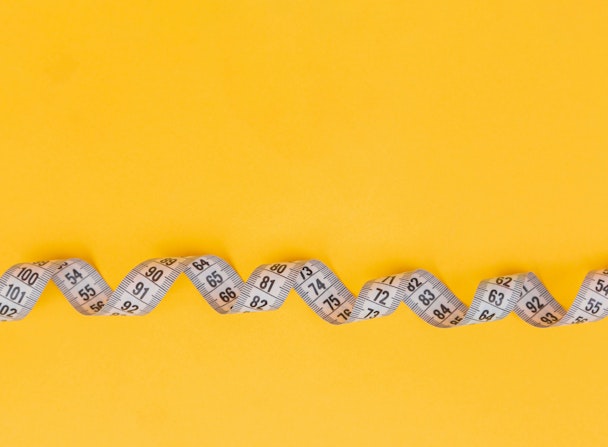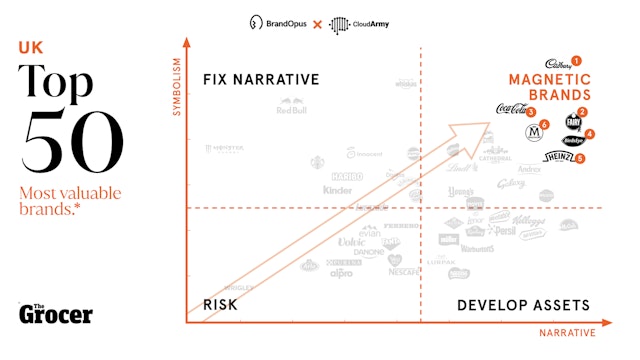Have we been measuring brand effectiveness all wrong? This agency thinks so
New research aiming to quantify brand ‘magnetism’ argues that too much market research still rests on outdated science and a flawed image what brands really are.

New research from BrandOpus and CloudArmy argues that brand measurement techniques need an update / Diana Polekhina via Unsplash
In a quote attributed to David Ogilvy over 60 years ago, the case for evolving beyond ‘traditional’ research efforts in marketing is made clear: “The problem with market research is that consumers don’t think how they feel. They don’t say what they think, and they don’t do what they say.”
The decades since have brought plenty of scientific progress, not least in bridging the gap between what we think we think and what we really do think. But, according to a new partnership between branding agency Brand Opus and research shop CloudArmy, market research still too often relies on archaic methods. By leaning, still, on people’s reported attitudes towards brands, CloudArmy’s president Thom Noble tells The Drum, researchers are showing themselves to be “20 years behind the science”.
The battery of tests designed by the partnership in response to this shortfall is based largely around one simple shift: from reported to implicit attitudes. Built around research most associated with Harvard’s Implicit Association Test – often used in the corporate world in training about interpersonal bias around race, gender, and sexuality – the promise is to understand not just what people think they think about brands, but to uncover what BrandOpus’ head of strategy Leo Hadden calls the “webs of meaning” that a brand conjures in the mind.
Implicit testing has been around for about 30 years, and this research isn’t the first to use it in the marketing context. But the partnership behind the study hopes that it will pull the industry in the direction of more scientific methods that more closely map the complex and mysterious world of signs and symbols a brand evokes in our minds. The output is what BrandOpus is calling a ‘brand magnetism index’, which synthesizes results from tests designed to test a brand’s narrative and symbolic evocations, as well as its salience in the mind of consumers.
Explore frequently asked questions
A new psychology for brand marketers?
Here’s how the tests work: panelists sit at their laptops for three tasks, with the speed and accuracy of their responses measured throughout. First: yes or no, is this a real brand? Second: which brand does this visual asset belong to? Third: a series of statements, like “this a brand with momentum” and “this is a brand I love”, to agree or disagree with. It spits out scores for salience, narrative, symbolism, and overall ‘magnetism’.
The test has been performed initially on the 50 most valuable brands in the UK, according to publisher The Grocer. Some results are unsurprising, with most valuable brand Cadbury coming out top across the board with distinctive visual assets and a story to tell. Others are less obvious but still unsurprising: energy drinks Red Bull and Monster have strong brand identities, but polarizing narratives. And some, arguably, pinpoint work to be done by otherwise successful brands: both alternative milk brand Alpro and baking firm Warburton’s rank as highly valuable but score poorly for the magnetism of their assets. On the flip-side, soap seller Fairy punches above its weight.
Hadden says that the ranking is only one part of the project; part of a broader aim to “try to understand the way the mind works, and structure a way of designing and managing brands to play to that in today's crazy, chaotic world”. While no individual element of the work’s methodology is unprecedented, he says, many brands and researchers are still led astray by flawed and outdated assumptions about psychology: “The danger is that a lot of those techniques are detached from how the mind actually works. And if they’re trying to predict future behavior, those methodologies are fundamentally flawed and broken”.

Hadden’s hope is that marketers reframe their understanding about impact, away from crude markers like exposure and fame and toward two characteristics: meaning and connection. “We need to be thinking about brands as drivers of commercial impact. To do that, we need to think about: what does a brand need to survive and thrive today? There are two dimensions to the answer – meaning and connection.”
“Meaning is the greatest influence on behavior, full stop. It's all about whether these meanings and associations are going to attract people or repel them. Then there’s connection. The identity system needs to be connected across the total interface between the brand and its audience. That’s more business-critical today than it has ever been, because of the fragmented landscape and the atomization of media.”
Speaking of fragmentation, another thing that Hadden hopes we can do away with is the idea of a brand as a single, unified thing. In the bizarre, kaleidoscopic jumble sale of our minds, brands exist as fragments whose unity is exactly the sort of thing brand-builders can affect, he says. “Brands exist as disconnected fragments in the world and in our heads. So what every brand needs is a tightly defined idea or role, which is then symbolized in a series of intentional visual and verbal shortcuts to that meaning. Those need to appear everywhere. And that doesn't mean matching luggage or a cookie-cutter approach. It just means that you have a tightly defined set of distinctive, meaningful assets.”
Advertisement
Hence the emphasis on speed of response: the rapidity of our associations is a heuristic for their strength, and thus for how much the brand stands out from our messy brain space. As Noble puts it, “what these association and implicit techniques allow us to do is to understand at an unconscious level what's actually in the mind – the power of and the strength of those associations… The first things that come to mind are the most powerful, the most burning-bright associations that one has around a brand.”
And it’s only when we understand that, Noble says, that the real job of marketing cab begin. By answering the question, “what is the in-the-mind map of a brand?”, he says, we can approach the more practical questions: “How can you trigger those associations through symbols or through narratives? What kind of role do those things play in reinforcing those associations? Or perhaps, if you're in the world of PR, you might want to suppress some of them? How can we rewire them? Amplify them?”
Advertisement
Does market research have work to do?
For Noble, these relatively recent shifts in market research are rare phenomena in market research: new techniques that can actually help brands to move the needle. “Think of all the ‘innovative new techniques’ that have come up since the introduction of focus groups in late-50s and 60s: semiotics, ethnography, all these different techniques. Have they actually helped to significantly change the two things that market research is supposed to do – predict how people behave and explain why? No. They’ve only created minimal, incremental differences.”
Suggested newsletters for you
The effect of this minimal change, Noble says, is stagnation – “it's taken an age to get the mainstream to take notice of the fact that, say, AIDA models and others which are purely based on logical, rational ideologies, are outdated, and not showing you the whole picture. In some cases, they can be downright misleading.”
Noble concludes: “Generally, marketers and researchers, are happy enough with doing what they've always done. It's really still the innovators, pioneers, and early adopters, who have been embracing these techniques, for over 20 years. There are marketers (at P&G, at Unilever, at Coca-Cola, at PepsiCo) who have been experimenting with these techniques. But most organizations are still happy enough with trackers and surveys and stuff that they don't even use; they just stick it on the metaphorical shelf… They need somebody to swim against the tide and do something quite different, which might come back with answers that totally undermine what everybody always thought about their brand. You have to be pretty bold to do that, and stick your neck on the block. But we're supposed to be change agents; we are supposed to be disruptive.”
Content created with:

BrandOpus
A Global Branding Agency. Always Independent. Proudly Employee Owned. BrandOpus specialises in strategy, design and identity, brand world activation and communications....
Find out more